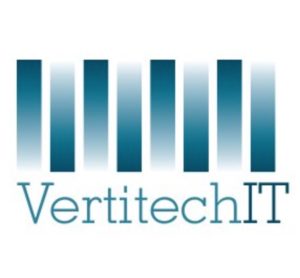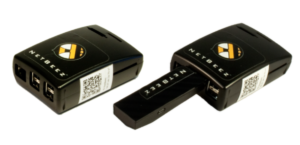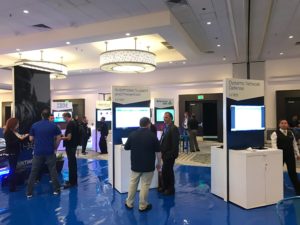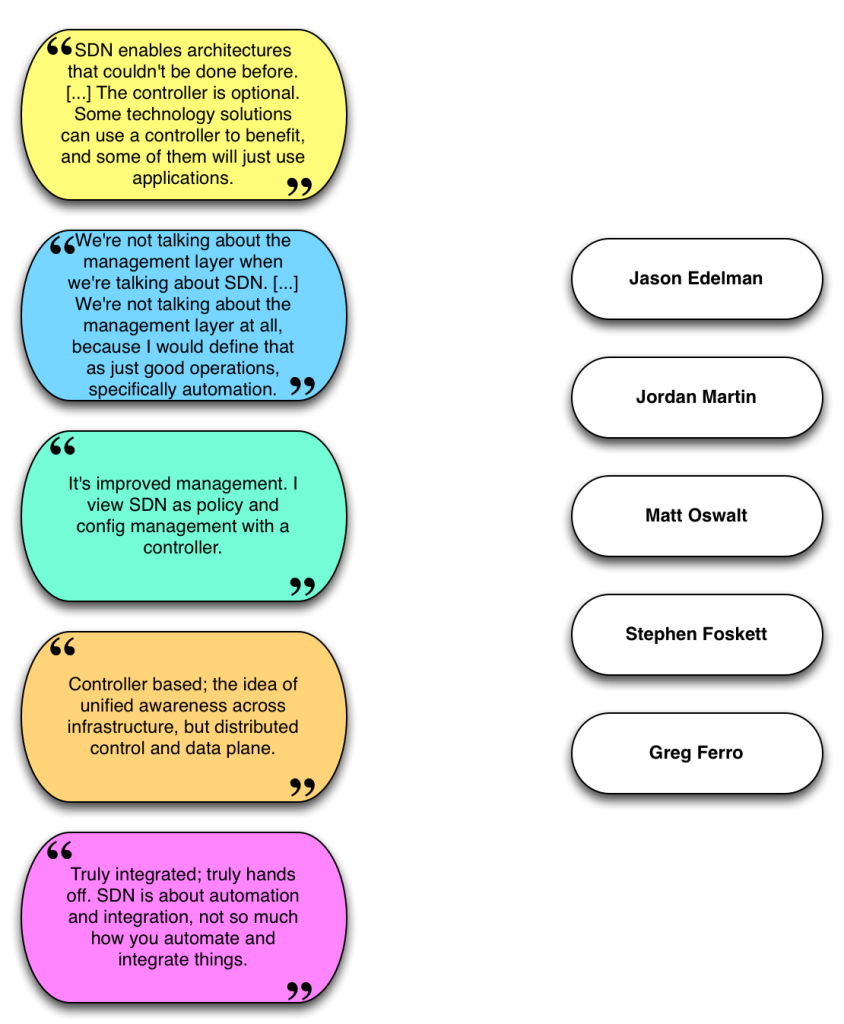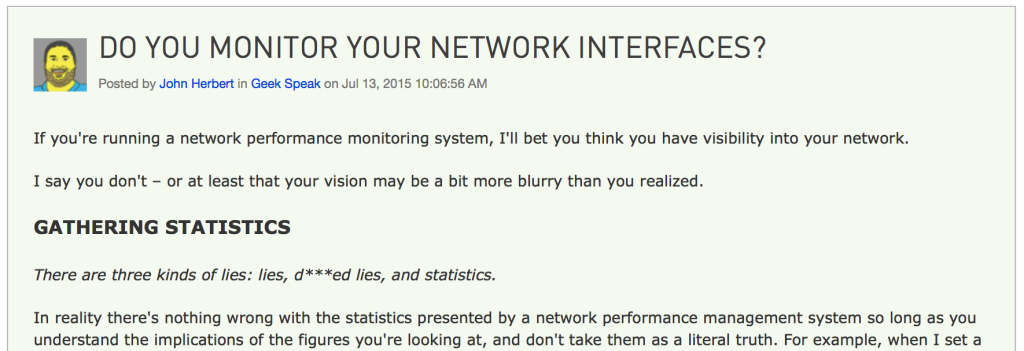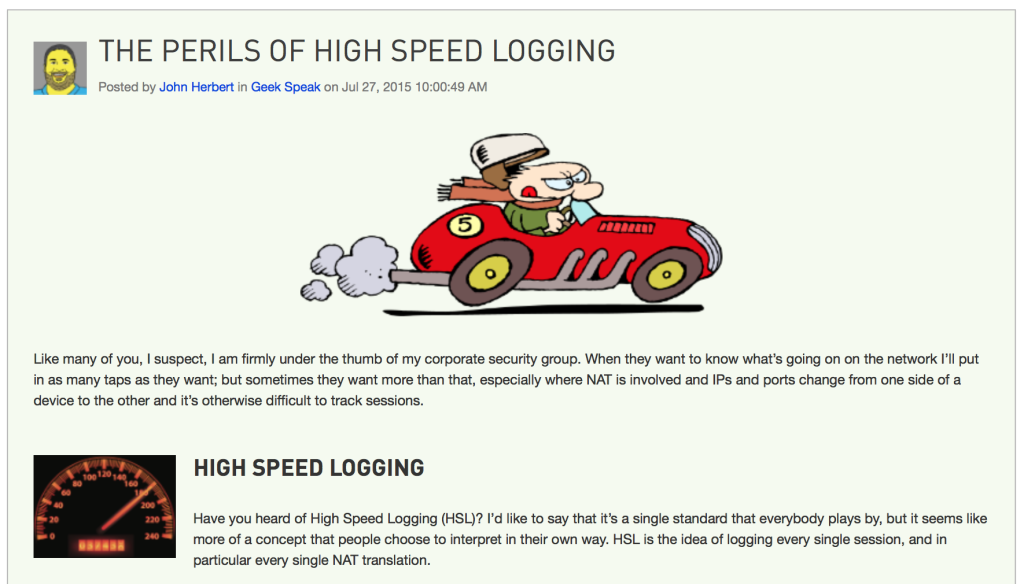Cisco Data Center Network Manager (DCNM) – Initial Feedback
Recently I had a chance to try using Cisco’s Data Center Network Manager (DCNM) software in anger. I must confess that sometimes anger
was the right word, but at other times it definitely made me smile. Based on the state of the documentation it’s clear that there are a couple of areas where very few people have spent time digging in (if they had, the same errors wouldn’t be in the documentation for at least 5 releases of DCNM), so on that basis I’m using this post—and more to follow—to document some of the fun things I have discovered along the way. For reference, I am running DCNM version 10, so there have been nine previous versions of DCNM in which the behavior can be perfected, and I gather that version 10 is a big step up from version 9.
To put my testing in context, I have a specific FabricPath Leaf-Spine topology already designed, and I am only using the aspects of DCNM pertinent to my particular needs for an Ethernet LAN fabric. I say this up front because I know that I am not using all of DCNM’s functionality, and perhaps I’m missing out on some of the fabric automation Continue reading
When Installs Go Bad…
It’s Thursday, so I think I’ll just leave this here:
... Info: 0/1/CPU0 (LC) (SDR: Owner) Proceed with this install operation (y/n)? [y] RP/0/RSP0/CPU0:Dec 16 08:29:48.835 : instdir[255]: %INSTALL-INSTMGR-4-INSTALL_OPERATION_WARNING : A warning occurred during install operation 19. See 'show install log 19 detail' for more information. Info: Install Method: Parallel Reload The install operation will continue asynchronously. RP/0/RSP0/CPU0:us-atl01-z1rt01(admin)# RP/0/RSP0/CPU0:us-atl01-z1rt01(admin)# RP/0/RSP0/CPU0:us-atl01-z1rt01(admin)#show install log 19 detail Fri Dec 16 08:30:10.472 UTC No log information available

Well, it made me smile, anyway.
If you liked this post, please do click through to the source at When Installs Go Bad… and give me a share/like. Thank you!
Automation For All The Things! What Happens Next?
Over the last five years, there has been increasing noise about whether the growing automation and orchestration of networks (and infrastructure in general) will lead to our jobs being eliminated. Concerns about mass layoffs are understandable given what happened when large scale automation was introduced to manufacturing.
What is left after automation has taken its toll on an industry? Presumably there is work for those who create and maintain the automation systems and there will be a need for workers to do the tasks which cannot be adequately automated, but the people who don’t fit into these categories might be facing a tough future. Some workers will retrain or adapt their skills to shift themselves into one of the “needed” categories, but since the idea of automation in most industries is to reduce the need for salaried humans be more agile and respond faster to customer needs, the competition for those positions is likely to be strong.
Does Automation Mean A Bleak Future?
Up front let me say that I believe that the predictions of imminent doom are utter codswallop. In order for the jobocalypse to occur, automation has to be present across the every industry because IT infrastructure exists pretty much everywhere as a business enabler, but only in subset of industries (e.g. Continue reading
MP on SpecTechUlar’s “6 Blogs for 2017” List
While I’m giving out good wishes, I’d like to also give a shout out and a thank you to Mark Silver at SpecTechUlar for including me on his list of “6 Blogs All Product and IT Specialists Should Add to Their 2017 Reading List.”
6 Blogs All Product and IT Specialists Should Add to Their 2017 Reading List
I fear that Mark has discovered my secret as he points out that “[my] eccentric personality definitely shows through in this technology blog.” I quite like that 
Thank you, Mark, for the kind words and the inclusion on your list! Mark works as a Product Manager for WalkMe, and runs the SpecTechUlar blog, pulling together interesting stories and best practices about technology and product management written by himself and other guest authors. He has found some amazing images for his blog posts, and even a glance at the home page pulls you in to the articles (I should learn from this!).
Thanks, Mark; I enjoyed discovering SpecTechUlar too, and I think many of my readers may also enjoy visiting.
If you liked this post, please do click through to the source at MP on SpecTechUlar’s “6 Blogs for 2017” List and give me a share/like. Thank you!
MP on Vertitech IT’s “Best IT Blogs 2017”
This is a quick post to say thanks to the folks at Vertitech IT for listing movingpackets.net among their Best IT Blogs for 2017 (“Must-Read Resources for CIOs, IT & Security Pros”).
In their own words:
VertitechIT’s top 50 IT blogs were selected because they are among the most current, frequently updated, credible, and informative sources of information related to IT on the web today. From musings of industry leaders, to the veteran guys and gals in the trenches who chronicle their IT journeys, these 50 blogs all have something important to say about the IT world of today, and tomorrow.
Vertitech’s list is definitely worth a browse; I’m very flattered to be listed in such amazing company. I was also delighted to see that NetworkingNerd, Jeremy Stretch and Chris Wahl were featured as well; are all blogs I follow from people I respect.
Some other highlights include Cisco, Gigaom, the Forrester Blog for CIOs, Solarwinds’ Geek Speak (for whom – along with other contributors – I have written a number of blog posts), SC Magazine and TechCrunch Enterprise.
I’m delighted to even be on the same page as these other outlets. Go check the list out and perhaps you’ll also find some great Continue reading
Can Teridion Really Boost Internet Throughput?
Teridion claims to bring cloud optimized routing to dynamic content delivery.
The home page continues We go beyond traditional CDN and WAN optimization combining the best of SDN and NFV to generate a better QoS and QoE for customers of cloud-based content , application, and service providers.
Got that? Perhaps it’s not the most succinct elevator pitch, but Teridion’s concept is at the very least interesting, and as a thought exercise it’s a fascinating look at how the Internet both enables us, yet fails us in so many ways. Even if the product is not for you, the problem Teridion claims to solve is an good thought exercise in and of itself, and it brings to the forefront the reliance we place on the internet despite the fact that we have no control over how our traffic traverses it.
Perhaps Morpheus is being slightly misleading in the image above, but otherwise the statement is pretty much true, although this isn’t a product intended for purchase by home users, for example. At its core, Teridion’s product concept is actually fairly simple. The Internet is used as a conduit to move data between locations around the world because it’s significantly more cost effective than Continue reading
Ask Me About My Beez! A Look at NetBeez, 18 Months On.
I was first introduced to NetBeez at Networking Field Day 9, where I saw an interesting monitoring product using Raspberry Pi-based agents and a cloud-based management and reporting console. That was back in February 2015, but I met with NetBeez a second time at Networking Field Day 12 in September 2016. Eighteen months is plenty of time to make some significant updates, so I’m going to look at the current product from a capabilities perspective and also see how it works when using it in anger. As background it may be worth reading my review of NetBeez from June 2015 first.
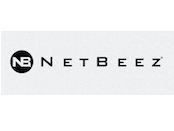
NetBeez Overview
By way of a refresher, the NetBeez product is made of two parts:
- an Agent (aka a
Beez
, which always sounds odd to say becauseBeez
sounds like it should be the plural form of the noun); - a web management portal to which the agents send their data and from which the agents are managed and their uploaded data are analyzed.
The Agents
- FastEthernet – As I saw at NFD9, the FastEthernet Beez agent is a Raspberry Pi in a case with a NetBeez logo on it, and the micro-SD card slot is covered by Continue reading
Juniper NXTWORK2016 – Quick Review
What to say about NXTWORK2016, Juniper’s second customer conference? In short, I’m impressed.

The San Jose Marriot was once again the venue for the two-day NXTWORK conference, but this year things were clearly scaled up a little. Food tables which last year took up around 1/3 of the main ballroom this year moved to a large marquee which had been built just outside the hotel (it’s much better than it might sound at first).

Replacing last year’s food tables was a Social Media lounge which confused me slightly only because it didn’t seem to be much of an actual lounge, although it did seem to have a couple of classic PacMan machines to amuse anybody sitting there.
The middle section of the ballroom was occupied mainly by sponsor stands in what I think Juniper was once again calling a ‘midway’, and there was some comfortable seating as well.
The remainder of the ballroom had been divided off and was set up for general sessions and keynotes. Just down the hallway were a number of other rooms set up for technical breakout sessions and, as last year, a testing center where attendees could take Juniper exams.
NXTWORK2016 Keynotes / General Sessions
Unwrapping Tangled Device Configurations – A10 Networks Edition
If you’ve ever tried to interpret an A10 Networks load balancer configuration, or some Cisco Modular QoS CLI
commands, you’ll know that doing so involves following references to other parts of the configuration, inevitably ones that appear earlier in the configuration than where you are now, using a display pager which doesn’t support a back
command to scroll up a page at a time. In short, it’s a huge pain. The same applies to Cisco ACE and CSM load balancer configurations. The modularity is beautiful and logical, but it’s a massive irritation to reverse engineer.

Spaghetti Configurations
I work regularly with A10 Networks load balancers. ACOS (the A10 OS) has a CLI and configuration format that’s very similar to Cisco IOS. Looking at a particular vPort (A10 terminology for a particular Virtual IP (VIP) and Port combination) and trying to figure out which real servers are related to it is irritating to say the least. Here’s an example of the configuration in the order it appears when you view it:
ip nat pool pool1 10.100.1.1 10.100.1.126 netmask /25 ! health monitor checkstatus method http url /status expect code 200 ! slb server server1 1.2.3.4 port Continue reading
This Week: Solarwinds ThwackCamp 2016
Solarwinds ThwackCamp 2016 begins tomorrow, Wednesday September 14th.

I’m sharing this information in case it’s of interest, so here are some questions and answers in case you are curious.
What is ThwackCamp?
ThwackCamp is an annual, online, free training event offered by Solarwinds. It is organized into two streams, a “How-To” track which is more technical, and an “IT Industry” track which offers training with a slightly more holistic twist to it. There are 10 sessions offered over two days, and although my registrations are mostly How-To sessions, I did find an IT Industry session slipping in there; you can mix and match as you please.
How do I sign up for ThwackCamp?
Register on the Solarwinds ThwackCamp home page. Disclosure: I get 25% commission on every dollar you spend on ThwackCamp registrations using this link. You need to register for a free Solarwinds account if you don’t already have one, and you have to be logged in before you can register for the sessions you want to attend. Emails will arrive shortly thereafter with meeting invites attached so you can populate your calendar easily with session reminders. Remember: there are no travel costs involved, no registration cost and no hotel required. I mean, if you want to fly somewhere Continue reading
Python versus Go – Fighting in Prime Time
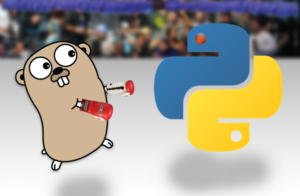
Which is faster, Python or Go? And by how much? This is the question I found myself asking earlier this week after troubleshooting a script that my son had written in Python to calculate prime numbers.
In The Red Corner – Python
My son worked out a fairly simple algorithm to generate prime numbers which we tweaked slightly to optimize it (things like not bothering to check even numbers, not checking divisors that are larger than 1/3 of the number, not checking any number ending in 5, and so on). I’m not saying that this is production-ready code, nor highly optimized, but it does appear to work, which is what matters. The resulting code looks like this:
#!/usr/bin/python
max = 100000
for tens in xrange(0,max,10):
for ones in (1, 3, 7, 9):
a = tens + ones
halfmax = int(a/3) + 1
prime = True
for divider in xrange (3, halfmax, 2):
if a % divider == 0:
# Note that it's not a prime
# and break out of the testing loop
prime = False
break
# Check if prime is true
if prime == True:
print(a)
# Fiddle to print 2 as prime
if a == 1:
Continue reading
Microservices Gone Wild – Tech Dive Part 3
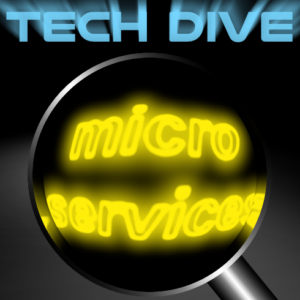
In this third post in the series about microservices, I’ll finish building my main application so that I can demonstrate a microservices-based application in action, albeit for a very basic set of functions. This post may be a little go-heavy in places, but bear with it and I’ll get to the demo soon enough. It doesn’t really matter what language is being used; I just used go because it’s good practice for me.
Building The Main Application
As a reminder, the main application will need to accept two numbers on the command line then will need to multiply the two numbers and then square that product. The two mathematical functions (multiply and square) are now offered via a REST API, and each one has its own separate Docker container with apache/PHP to service those requests.
I have created hostnames for the two microservice containers (DNS is the only smart way to address a microservice, after all) and they are accessed as:
multiply.userv.myapp:5001square.userv.myapp:5002
The API path is /api/ followed by the name of the function, multiply or square, and the values to feed to the function are supplied as the query string. Most APIs tend Continue reading
Juniper NXTWORK – A New and Better Kind of Conference

Last November, I was invited to the inaugural Juniper customer summit, NXTWORK 2015, and it was a great event. I’m pleased to see that NXTWORK2016 is happening again this year, October 3rd – 5th, 2016 at the Santa Clara Marriott in Santa Clara, CA.
NXTWORK 2015
Rewind the clock to last year. For years, Juniper users have wanted a Juniper technical event if not to rival Cisco Live, then at least to offer some of the same benefits to the attendees. As anybody who organizes a conference will tell you, it’s no mean feat to get even a small event right — Cisco has had 26 years to get Live to where it is now — so I can only imagine how daunting it must be to set up the first Juniper customer event, knowing full well that everything you do will be compared to Cisco Live, just as I am doing now. Wisely, it seems that Juniper decided to look at the basics of what attendees would expect to be at the conference, then wrap those up in its own unique way. While there were a few minor inevitable teething issues, my overwhelming feeling at the end of the conference Continue reading
Netflix Flies In The Clouds

Last month, the announcement was made that after seven years, Netflix completed its move to the cloud. While offering my sincere congratulations to Netflix, it begs the question what chance smaller companies have of moving successfully to the cloud.
Weaving Threads
I love it when a plan comes together; it’s great seeing multiple threads in different places intersecting, and the news from Netflix pulled together a few things from the last 12 months in a rather interesting way.
Thread #1
I first heard about the Netflix announcement by listening to the Packet Pushers Network Break
episode 74. I don’t have enough time to keep up with all the industry news direct from all the sources out there, so I try to listen to podcasts on my drive into work. Network Break is one of my favorites, with Drew Conry-Murray and guests rounding up the week’s news and sharing their opinions.
Thread #2
The Netflix announcement explained that the company migrated from a monolithic app to hundreds of micro-services.
Rewinding the clock to ONUG Spring 2015, I listened to a presentation from Battery Ventures’ Adrian Cockroft, in which he espoused the benefits of containerized micro-services. The idea is that if Continue reading
The Naming of Hosts
The Naming of Hosts
The Naming of Hosts is a difficult matter,
It isn’t just one of your holiday games;
You may think at first I’m as mad as a hatter
When I tell you, a host must have THREE DIFFERENT NAMES.
First of all, there’s the CNAME you want to use daily,
Such as nms, intranet, HR or games–
Such as payroll, or passwordchange, IT or training,
All of them sensible everyday names.
There are fancier names if you think they sound better,
Vendors and products that all sound the same,
Such as PeopleSoft, OpenView, Cisco, or NetApp–
But all of them sensible everyday names.
But I tell you, a host needs a name that’s unusual,
A name that’s peculiar, and more dignified,
Else how can it justify license renewals,
Or memory upgrades, or hybrid flash drives?
For names of this kind, I can give you a standard,
Twelve bytes for location, and fifteen for app,
These names are the ones that are never remembered,
They’re cryptic, unreadable, frustrating crap.
But above and beyond there’s still one name left over,
And that is the name that you never will guess;
The name that no human research can discover–
But Continue reading
Meet the Engineering Team at Citrix NetScaler
We had some great vendor presentations at Networking Field Day 11 and in the face of some pretty stiff competition, Citrix won my inaugural Best surprise
award, which I have just invented.
Citrix NetScaler
It’s not that the Citrix NetScaler Application Delivery Controller (ADC) is a particularly unique product; after all, I could as easily implement load balancing with the open source HAProxy, and there are impressive ADC hardware vendors in the commercial space, including the ubiquitously expensive F5 Networks and disruptive challenger A10 Networks. What grabbed my interest me however were the performance statistics of the NetScaler appliances, and specifically the process through which the performance was achieved by the Citrix engineering team.
Intel DPDK
If I might side track for a moment, at Networking Field Day 10, Intel discussed their DPDK (Data Plane Development Kit) designed to optimize soft-switched packet performance on their CPUs. Intel had noted that the performance of Open vSwitch (OVS) was nowhere near the native ability of the CPU, and consequently they invested time analyzing in scary detail exactly how packets flowed in order to find out where the bottlenecks were, and to see whether those could be eliminated or optimized in Continue reading
SDN? I Still Don’t kNow what it is…
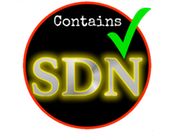
Today you get to play the SDN Definition Game: match the definition of Software Defined Neworking with the person who said it at the Networking Field Day 11 Delegate Roundtable. I’d make this exercise “drag and drop” but that sounds a bit complicated, so instead you’re on your honor not to cheat. Click on the image to see the answers in a new window.
SDN, Whatever That Is
I should note that the quotes I used were taken from conversation, so if I mis-transcribed anything or used it too far out of context I apologize to the speaker concerned. In actual fact though, who said what in this case doesn’t really matter. I shared the quotes to demonstrate that even when defined by a group of smart people like these, there doesn’t seem to be one definition of SDN that everybody can agree on. That has opened the door for marketing departments everywhere to use the SDN tag on anything and everything (aka “SDN Washing”) in the hopes that it sounds impressive and thus presumably increases sales. As a result, many people – both vendors and customers – believe that SDN is becoming a four letter word.
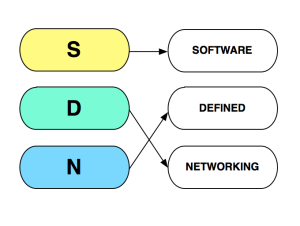
Buy the Solution, Continue reading
Riverbed – Another Angle on SD WAN

Riverbed’s entry –or perhaps “expansion”– into the SD WAN market is interesting to me primarily because the approach being taken is a little different from the other solutions I have seen so far.
The Rest
The solutions I’ve seen from vendors like Viptela, Silver Peak, Cisco, CloudGenix and VeloCloud mainly focus on providing reliable and optimized transport from spoke site to hub site, and in some cases also from spoke to spoke, and in fewer still, spoke to Internet. The underlying approach is to monitor various statistics for each of the available WAN links, and intelligently route data flows over the link that will best meet the application’s needs. Some solutions add error correction and/or packet duplication techniques to overcome packet corruption and loss as well. Let’s call this Link Selection, noting that both links are used so it’s not a “one or the other” kind of thing.
Riverbed SD WAN
Riverbed has come at this problem from the angle they know best, WAN optimization. The presentation Riverbed gave at Networking Field Day 10 was not about how to choose which link to use, but more about how to effectively manage a hybrid WAN (say, MPLS for corporate access in Continue reading
Geek Speak Round Up – Network Management

I mentioned a few months ago that I had been asked to write some thought-provoking blogs on the subject of network management for the Solarwinds Thwack Community “Geek Speak” area. I’ve now finished my six posts, and while they won’t be reproduced on movingpackets.net, I’m linking to them here as I think they touch on some subjects close to my Software Defined Heart.
Click da pic to read the article.
1. Do You Monitor Your Network Interfaces?
2. The Perils of High Speed Logging
3. Could SNMP Please Just Die Already?
4. Keeping Your Secrets Secret
5. DHCP As A Configuration Tool
6. Network Management Isn’t Enough Any More
I hope you find something to think about or react to there. I’ve tried to blend some hyperbole with a tablespoon of annoyance and a light dash of technical reality. If you have any specific comments on any of these posts, the right thing to do would be to login to Thwack and comment there, but I’ll take any feedback you want to give, wherever it is.
Disclosures
I am participating in the Solarwinds Thwack Ambassador program on a paid basis for July-September 2015. My posts Continue reading
Cisco Intelligent WAN (IWAN)

When I made a stab at defining SD WAN recently, I noted that Cisco’s IWAN solution had provided a bit of a contrast to some of the other Software Defined WAN solutions I’d seen; not in a bad way, but I was certainly interested in the approach.
SD WAN Definition
I’m going to “do a Joe Onisick” here and quote myself as a reference for what I might be hoping for from the Cisco IWAN solution:
“SD WAN is a solution that uses real time WAN link performance monitoring and data packet inspection to autonomously manage the distribution of network traffic across multiple, likely heterogenous, WAN links with the aim of improving and optimizing WAN performance in alignment with the business requirements.” – John Herbert
One thing my definition doesn’t mention is how these systems get deployed, and since that’s interesting, perhaps let’s start there.
IWAN Zero Touch Deployment
It seems to me that ZTD has become a checkbox requirement for all the SD WAN solutions, and perhaps it’s about time. Zero Touch Deployment in the context of SD WAN means being able to ship a box to a spoke site, have ‘Dumb Hands’ on site plug in the Continue reading


